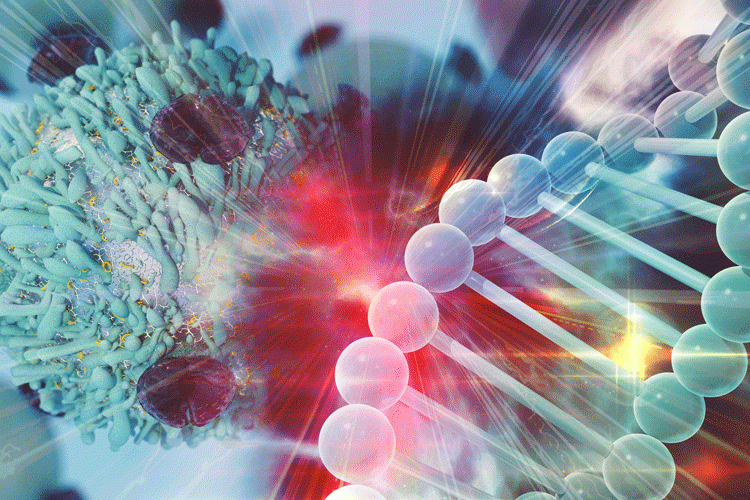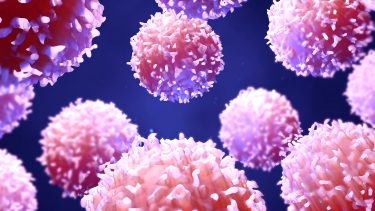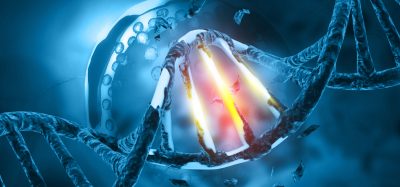Neoantigens: presenting new vaccine opportunities in immuno-oncology
Posted: 4 June 2020 | Nikki Withers (Drug Target Review) | No comments yet
Neoantigens have gained much interest in recent years, mainly due to their ability to elicit a strong, specific immune response. Nikki Withers spoke to two immunology experts to explore the progress being made and assess what remains challenging for cancer investigators working on these transformational therapies.


Traditional treatments for malignant tumours include surgery, chemotherapy, radiotherapy and targeted treatments. Each of these treatment methods comes with its pros and cons, and in recent years immunotherapy has emerged as a promising approach for targeting tumours. An evolving immunotherapy that has recently gained attention focuses on neoantigens; non-autologous proteins generated by non-synonymous mutations in the genome of the tumour cell. Neoantigens are highly immunogenic, as they are not expressed in normal tissues. Therefore, the presence of neoantigens is one of the essential differences between tumour cells and normal cells. The concept of using the identified neoantigens as vaccines to actively stimulate patients’ auto‑immune system and generate anti-tumour responses has gained recognition and is currently being explored.
Why are neoantigens of interest to immunology researchers?
“Neoantigens are of great interest to immunology researchers because they are a way for immunologists to distinguish foreign antigens from ‘self’ antigens,” explained Sharon Benzeno, Chief Business Development Officer at Adaptive Biotechnologies. “Antigens are proteins or pieces of proteins that either already exist in our bodies, ‘self’ antigens, or ‘foreign’ antigens that come from outside the body, such as pathogens or viruses. In some cases, foreign antigens are created when normal proteins in healthy cells mutate and trigger cancer disease signals.”
She noted that T cells can specifically distinguish foreign antigens from ‘self’ antigens, triggering an immune response. “A real-life example of a foreign antigen is the SARS-CoV-2 virus that causes COVID-19. Most viral antigens bear no resemblance to ‘self’ antigens and so are quickly recognised and targeted by T cells. Virus-specific T cells generated following an infection are part of a cascade of events that lead to rapid viral clearance.
“In oncology, neoantigens are the hallmark of a patient’s tumour. Neoantigen-specific T cells are attractive in that they can be targeted to kill tumour cells to fight cancer in the same way that T cells successfully fight a viral infection.”
Jessica Flechtner, Chief Scientific Officer at Genocea, agrees: “Neoantigens are unique because the mutations that occur in the DNA change the coding region of these proteins. Suddenly, parts of the tumour look foreign to your immune system; you are no longer trying to overcome the tolerance to ‘self’; you are encouraging the immune system to pay attention to the tumour like it was an invading pathogen.”
Predicting neoantigens – a focus on genetics
Next-generation sequencing has really changed the way that we operate; you can now obtain sequences very fast”
There are several forms of genetic mutation that can occur in cells, including point mutations, insertions or deletions (indels) and frameshift mutations. The changes in amino acid sequence observed from indels and frameshifts are often more obvious than those from point mutations. However, whether a mutation can form tumour neoantigens depends on several factors. First, it is dependent on whether the mutated sequence is translated into a protein and whether this peptide can be processed and presented on the surface of the cell. It also depends on the affinity of the mutated peptide and the patient’s major histocompatibility complex (MHC) molecules and the affinity of the mutant peptide-MHC complex with the T-cell receptor. Therefore, the prediction of neoantigens requires not only identification of genome-expressed mutations, but also data regarding the patients’ MHC types.
“Cancer patients across solid tumour types have on average between 200-300 tumour-specific mutations or neoantigens. Sequencing technologies, such as whole exome and RNA sequencing, have enabled rapid identification of these tumour-specific mutations that lead to single amino acid substitutions or frameshifts that code for aberrant, cancer-causing proteins,” said Benzeno. “Recent advances in sequencing and bioinformatics technologies have led to the discovery of additional novel classes of cancer antigens that represent new attractive targets for cancer-killing T cells and associated T-cell receptor (TCR)-based immunotherapies.”


Adding to this, Flechtner said she has observed immense progress in the algorithms used to predict what is potentially going to be a neoantigen. “Next-generation sequencing has really changed the way that we operate; you can now obtain sequences very fast. The cost per sequencing run has decreased substantially and they are much more sensitive, even than they were two years ago.” However, she pointed out that unless you ask questions with consideration of the patient’s own T cells and antigen presenting cells, you are going to get a lot of wrong answers.
She provided a cautionary example, where they screened every single mutation in a patient’s tumour with their own T cells. “When we compared these algorithms with what we truly found T-cell responses to, we found that they have a very high false positive rate. Even more shocking to me was that about 50 percent of what we found to truly be a T-cell target for these patients were not predicted at all. They have a 50 percent false positive rate and a 50 percent false negative rate, which means we are losing so much opportunity to treat these patients. We need to ensure we find the right targets.”
Vaccine development
According to Flechtner, “the world is our oyster” when it comes to the opportunities surrounding neoantigen vaccines. “There is still so much room to help these cancer patients. So far we have just scratched the surface of what we can do to help them with neoantigen vaccinations.” She explained that early trials have been simultaneously promising and disappointing: “They are promising because multiple individuals have proved the concept that you can create a personalised medicine that is unique to every patient. You can elicit immune responses in those patients to their own tumours. It is relatively safe, which is one of the problems with other treatment modalities in cancer, where they can cause a lot of toxicity to a patient that is already sick. It shows we are on the right track by trying to work towards neoantigen vaccinations.”
However, she adds that the data, so far, has been somewhat disappointing: “The clinical data has been ambiguous and somewhat hard to interpret. In some cases, it looks like the vaccine has a positive impact, but in other cases you cannot tell whether it was the vaccine or perhaps a drug that it was co‑administered with. There is some way to go.”
So far we have just scratched the surface of what we can do to help them with neoantigen vaccinations”
The recent shift towards personalised, rather than a one-size-all approach to medicine, is one reason developing these vaccines is of great interest to immunologists. “Neoantigen vaccines are truly personalised medicine,” said Benzeno. “Every cancer has a different neoantigen landscape. Neoantigen vaccines can be tailored to a patient’s specific set of unique mutations or neoantigens with the goal of driving a robust patient-specific T-cell response that targets cancer cells and spares normal healthy tissue. Many neoantigen-based vaccines in development include around 20 neoantigens. The big question is whether the 20 neoantigens that are selected in the vaccine design are the best ones to elicit strong immunogenic or potent T-cell responses.”
Importantly, Benzeno noted that neoantigen-based vaccines can be designed to go after many different cancer antigens at once. “This multi-targeting approach can be achieved with a single vaccine. While traditional treatment options would require administering a combination of different targeted therapies, which can limit dosing and increase toxicities.”
Are there limitations?
While neoantigens hold much promise for cancer treatment, they still come with limitations. “One limitation is the ability to correctly select the most clinically relevant neoantigens to inform the vaccine design,” said Benzeno. “Also, due to the large universe of neoantigens, literally hundreds, that could be used in these therapies, neoantigen vaccine approaches will need to consider including additional new classes of tumour-specific neoantigens.”
It is apparent that tumour vaccines targeting neoantigens show great potential for treating cancer patients and it is hoped that clinical data in the coming year will produce promising results. “I am really looking forward to seeing what the second half of the year brings in terms of vaccines,” concluded Flechtner.
Related topics
Drug Development, Drug Targets, Immuno-oncology therapeutics, Immunogenicity, Immunotherapy, Protein, Proteomics, Research & Development, Sequencing, Vaccine
Related conditions
Cancer
Related organisations
Adaptive Biotechnologies, Genocea, GenScript








